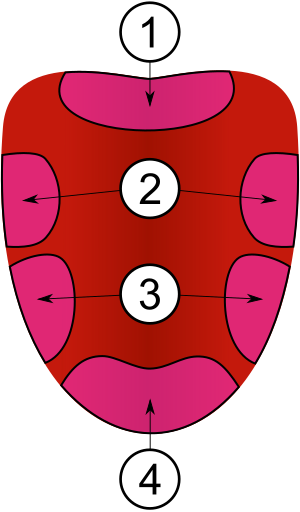1
Also known as the sense of taste, is the sensory system that allows us to perceive different flavors from substances like food, drink, and medicine. Molecules that we taste (called tastetants) are sensed by cells in our mouth, which then send information to the brain. These are specialized cells made to only receive taste.
Taste buds (gustatory receptors) send the taste information through neuro pathways to the brain stem. The brain stem sends the information on to the thalamus and the gustatory cortex, which is located in the left side of the cortex. These parts of the brain interpret the taste information and send back data to you for your reaction to the taste you are receiving.
2
Taste is the perception produced or stimulated when a substance in the mouth reacts chemically with taste receptor cells located on the taste buds in the oral cavity, mostly on the tongue.
3
Taste buds are sensory organs found on your tongue (mostly). Taste buds largely reside on the tongue but also exist in small number on the lining of the throat near the tonsils as well as in the gums.
Scientists use to think that different parts of the tongue sensed different tastes, but many now feel that the taste buds on the different parts of the tongue are capable of receiving and processing a variety of taste information.
The bumpy nature of your tongue comes about because of these bundles of taste pores that are set to receive tastes as they enter your mouth.
4
Sweet,
Sour,
Bitter,
Salty,
Umami (savory)
(See tongue "numbered" image) Popular myth about distinct regions for tasting different tastes 1. Bitter 2. Sour 3. Salt 4. Sweet
Many spices damage taste receptors.
Teaching Idea: Create a short slideshow, quizlet, Kahoot, or other "game" that has pictures of foods that primarily have one of the above flavors. Have teams compile "points" or collectively identify a huge host of foods common to your cultural group(s).
5
right top to bottom: sulceus terminalus, villate papillae, fungiform papillae, filliform papillae left top to bottom: lingual tonsil, folliate papillae
6
The sense of smell and taste are very closely related because they use the same types of receptors. If someone doesn't have a sense of smell, it will dull their ability to taste well. Science says that the receptors assist each other, and the smell of the food you are eating enhances the taste your taste buds are receiving. When the smell receptors don't work, then less information makes it to the brain to be interpreted as taste.
Touch: Your tongue feels the heat or chill of food you eat as well as textures. these touch sensors affect what you EXPECT to taste and thus can make something "more tasty"!
7
Scientists feel that at least half of food preference is genetic. Those preferences being genetic often demonstrate themselves in preferences to try or not try new foods. However, training affects what tastes we will learn to accept as part of our culture, ethnic origins, nutritional choices, or religious health habits. The Bible makes its calls to healthy living because God made us and knows that we can train our taste buds!
8
Many conditions can affect a person's sense of taste:
- the common cold
- flu
- sinus infections
- throat infections such as STREP throat or pharyngitis
- salivary gland infections
- COVID-19
Other things that cause loss of taste:
- smoking
- failure to brush your teeth or participate in other oral hygiene
- medications necessary for other illnesses or treatments
Many conditions only affect a person's sense of taste temporarily. However, especially since COVID-19 lists loss of smell & taste as a primary indicator. Please see your doctor if you lose a sense of taste and smell.
Many times, there are medical treatments to enhance or "cure" a loss of taste. In many cases, taste returns once you heal from your illness.
9
- Psalm 34:8 - taste and see that the Lord is good.
- Psalm 119:103
- Proverbs 27:7
- Exodus 16:31 (Numbers 11:7-8) - the taste of manna
- Genesis 27:24 - Jacob serves soup to Esau
- John 2:9 - Story of Jesus turning the water to wine
10
METHOD: The easiest way is to do this is with a parent, guardian or friend. Have them blindfold you before they prepare the items for tasting to make sure you have no idea what the items are. Of the foods you taste at least 2 should be from each taste sensation category. Taste each item individually. Make sure that your parent, guardian or friend takes notes based on the questions below for each food that you taste. For each item you have 3 guessing attempts.
References





